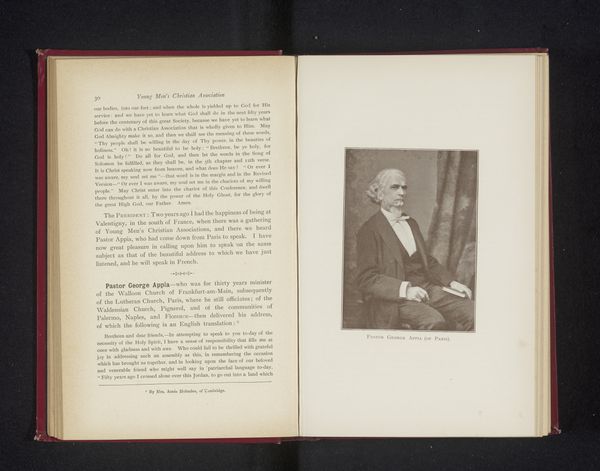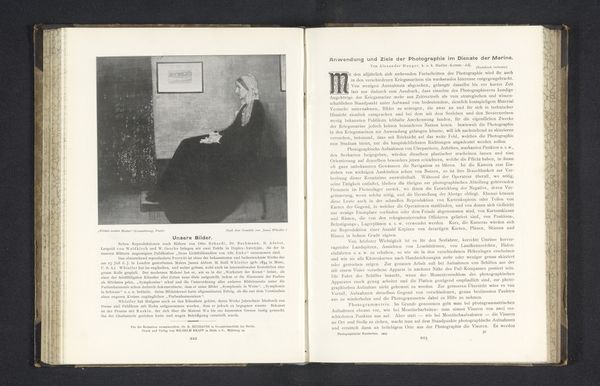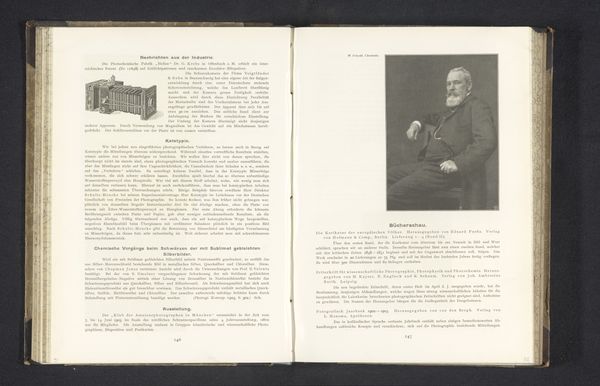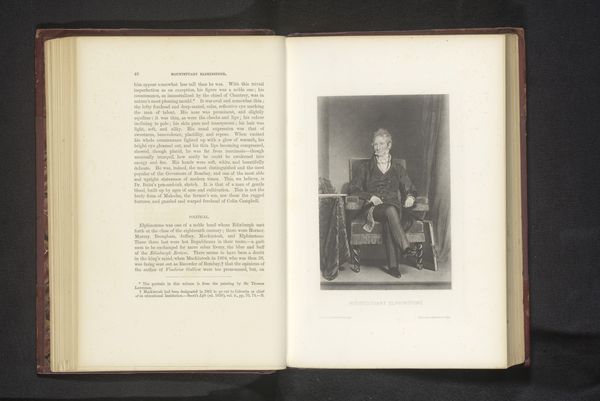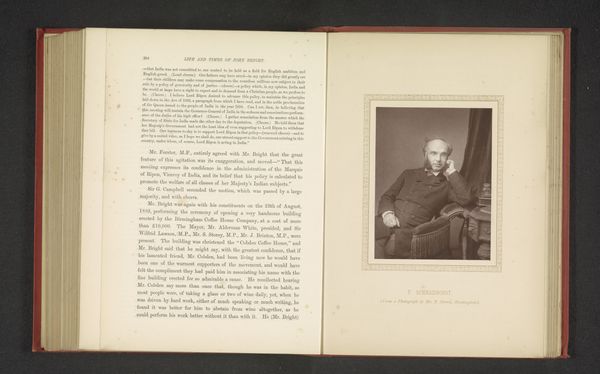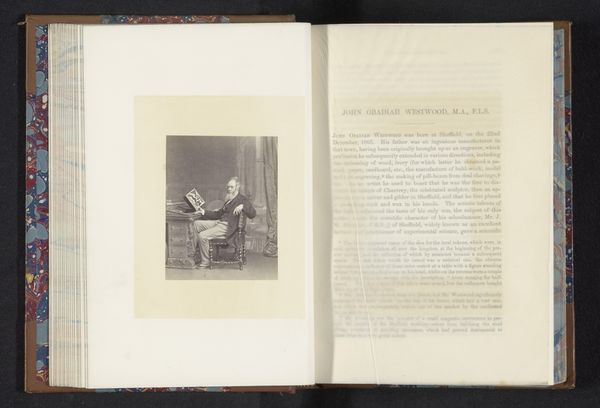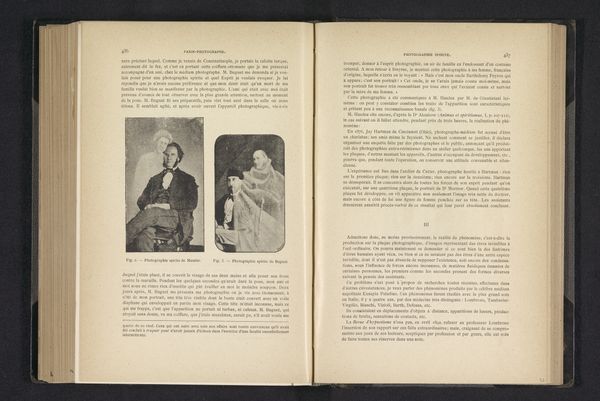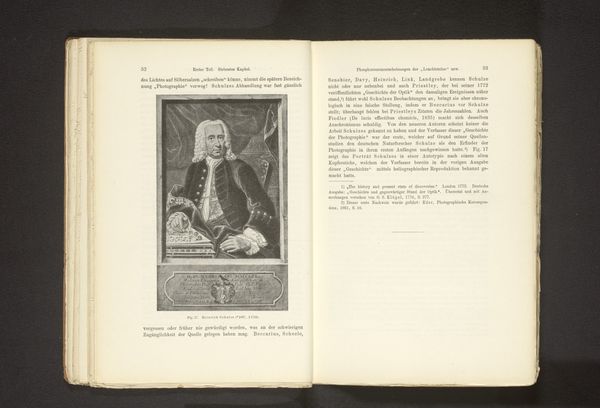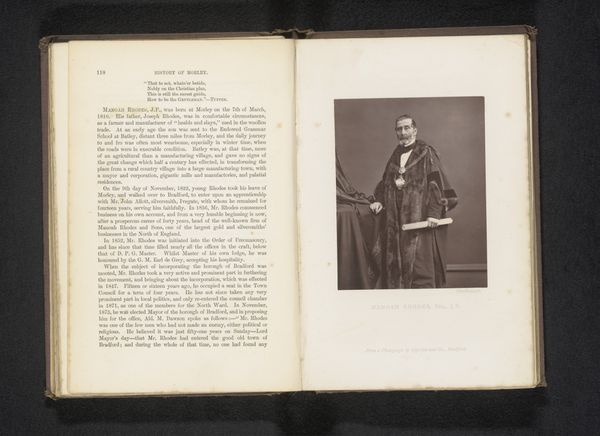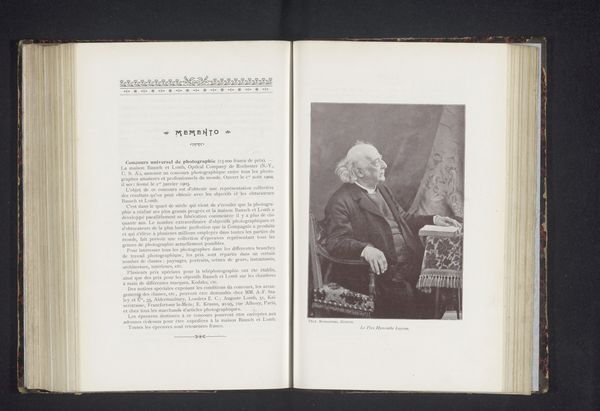
print, photography, gelatin-silver-print, albumen-print
#
portrait
# print
#
photography
#
gelatin-silver-print
#
genre-painting
#
albumen-print
Dimensions: height 141 mm, width 87 mm
Copyright: Rijks Museum: Open Domain
Curator: This is a photographic portrait of Peter II of Brazil. It's a gelatin silver print made before 1874 by Henschel & Benque. The photo features the emperor seated at a small writing table. Editor: He appears comfortable, almost domestic. Yet, even in repose, the weight of his office seems palpable. He embodies both authority and approachability. What symbols do you detect? Curator: There's a layered semiotic system here. Firstly, the beard itself—the beard of wisdom and statesmanship—lends him gravitas, rooted in centuries of European iconography. Secondly, note the cross-legged posture. Traditionally discouraged as undignified, here it suggests an ease or accessibility—but that also runs contrary to ideas of royalty and social station. Finally, there’s the detail of his clothing, simple yet refined. Editor: I'm intrigued by that accessibility. It clashes with the power dynamic inherent in a colonial context. Brazil, under Pedro II, was grappling with abolition, class disparity, and modernizing forces. To what extent is this an intentional image cultivated for foreign or even internal consumption to consolidate control? Curator: I see it also through the lens of the Orphic figure, an Apollonian ruler devoted to the sciences and the arts, in touch with philosophical movements such as Positivism. Remember he actively championed education, infrastructure, the sciences, as well as art. It goes a step beyond consolidating power. Editor: An active choice was made in the depiction of his hand—not in a fist or pointing, not holding anything that signals political action, but laid almost tenderly, with the fingertips softly curved to meet the flat plane of the desk. So much tension in the hand. But perhaps tension is a key characteristic of 19th-century European political portraiture? Curator: Certainly. We find him situated amid progress while embodying tradition. But, more than just Europe, look to the long visual history in the Portuguese royal line, extending back centuries and adapted into new modes through empire. Editor: This image underscores how intertwined personal and political identities can be. Even the "naturalistic" poses adopted by sitters during photography's ascendancy carry a historical echo chamber. It makes you wonder about the relationship between photography, nationhood, and constructing individual roles within an empire, both at home and in its territories. Curator: Agreed. Its layers show us not only an Emperor, but an historical process through his carefully curated persona.
Comments
No comments
Be the first to comment and join the conversation on the ultimate creative platform.
